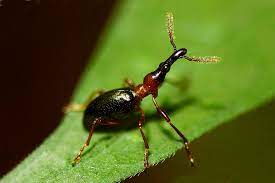Current panel name: SweetPotatoWeevil_DArTmp_BI_CU (1.0)
Panel name for soft release: SwPotWeeDArTmpBICUv1
Version description: (1.0) original
Availability: Coming soon!
Current panel name: SweetPotatoWeevil_DArTmp_BI_CU (1.0)
Panel name for soft release: SwPotWeeDArTmpBICUv1
Version description: (1.0) original
Availability: Coming soon!

Description: DArTmp Sweetpotato weevil population structure version 1 is a small 101 SNP marker panel developed by Breeding Insight at Cornell University, in collaboration with DArT and funded by USDA-ARS for public use. The DArTmp assay uses custom designed oligos to amplify targeted SNPs, and their flanking sequences, prior to Next Generation Sequencing (NGS). The sequenced amplicons are demultiplexed and targeted SNPs/haplotypes are analyzed using DArT P/L’s proprietary pipeline.
The markers were designed from 40 sweetpotato weevils (Cylas formicarius) collected within the southeast United States of America from different subpopulations. The panel can be used to determine to which subpopulation sweetpotato weevils collected in the wild belong and migration patterns. Panel developed by DArT in collaboration Breeding Insight at Cornell University and funded by USDA-ARS for public use. Access to the panel can be found on DArT’s website (https://www.diversityarrays.com/services/targeted-genotying/).
Results and Data Sharing: DArT offers multiple data output formats. Users are encouraged to work with DArT to ensure the data type they desire is provided. Users are also strongly encouraged to request the Missing Allele Discovery Counts (MADC) file from DArT when placing orders. This file contains the read counts of each 81-bp michrohaplotype detected in each sample and at each locus. Breeding Insight requests that the MADC file and sample metadata also be sent to bi-genotyping@cornell.edu to be added to the public microhaplotype database for fixed allele naming and public data sharing. Proprietary sample metadata can be privatized in the database for IP protection.
Citation: In preparation